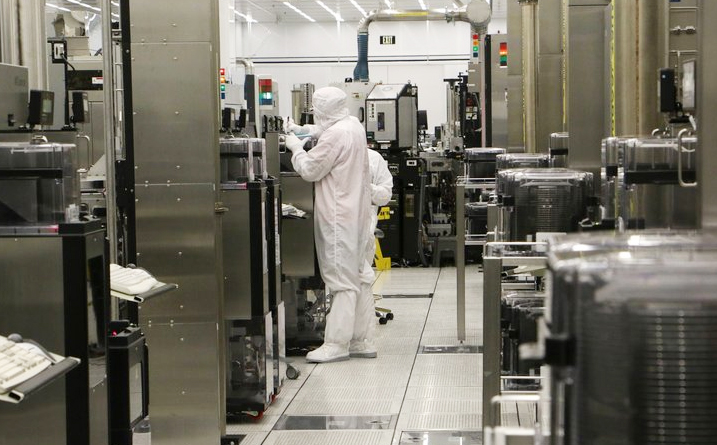In recent days, there has been mounting anticipation surrounding a significant bill aimed at providing grants, tax credits, and various incentives to bolster domestic semiconductor manufacturing. The bill’s progress hinges on Senate action, and while Majority Leader Chuck Schumer had initially indicated a potential vote for Tuesday, it had not yet occurred at the time of this report.
The Proposed Legislation
The bill in question is a comprehensive legislative effort designed to support and revitalize the semiconductor industry in the United States. At its core, it allocates a substantial $52 billion in financial incentives and research funding to stimulate domestic semiconductor production. Additionally, the proposed legislation includes a semiconductor investment tax credit, with the possibility of incorporating further provisions as needed.
Senate Deliberations
Given the urgency of the matter, the Biden administration had urged Congress to expedite action on the semiconductor legislation before the August recess. The concern was that without decisive action, semiconductor manufacturers might opt to establish new production facilities outside the United States. Other countries, such as South Korea, Japan, France, Germany, and Singapore, have been actively enticing chip manufacturers with enticing incentives, making it imperative for the U.S. to remain competitive.
Local Impact and Outlook
The impact of this legislation extends beyond the national level and directly affects regions with a stake in semiconductor production. Steven Dimeo, President of Mohawk Valley EDGE, emphasized the importance of the pending chips legislation in promoting semiconductor industry growth within the United States. This legislation aims to address disparities between the U.S. and other parts of the world while safeguarding national security interests.
In the context of local projects, the legislation could have a significant impact on ventures like the Wolfspeed semiconductor fabrication facility under construction in Marcy. Dimeo clarified that the current Wolfspeed project was not reliant on the federal CHIPS Act. Nevertheless, EDGE is actively engaged with companies exploring major expansions, and both the federal CHIPS Act and New York’s recent adoption of the Green Chips Excelsior Jobs Program play pivotal roles in their site selection decisions. Without the federal legislation, supporting growth in the United States becomes increasingly challenging.
Dimeo also highlighted that EDGE has confidentiality agreements in place with companies considering the Marcy site, indicating a strong interest from potential investors and partners in the region.
Future Prospects
The semiconductor industry’s outlook remains promising, with ongoing projects like Wolfspeed’s semiconductor fabrication facility slated to drive innovation and create employment opportunities. Wolfspeed CEO Gregg Lowe noted that a multi-year agreement had been signed with Lucid Automotive, a California-based company that relies on silicon carbide chips from Wolfspeed for their luxury electric vehicles. As construction progresses and instrument installation reaches completion, the facility aims for full production ramp-up by 2029, promising the creation of over 600 direct new jobs by that time.
Furthermore, the presence of such a facility often attracts other related businesses to the area, creating a ripple effect that can benefit the local economy and contribute to the development of semiconductor research and fabrication hubs.
Legislation and Industry Resilience
The semiconductor industry is a linchpin of modern technological advancements, influencing everything from smartphones and laptops to autonomous vehicles and artificial intelligence. As such, it holds a strategic significance for national economies and security.
The proposed legislation, often referred to as the CHIPS Act, represents a crucial step in ensuring the United States maintains a robust semiconductor industry. The $52 billion in financial incentives and research funding addresses some of the challenges that have eroded America’s competitive edge in this vital sector. By supporting semiconductor manufacturing, research, and development, the legislation seeks to reinvigorate the industry, create jobs, and foster innovation.
The Global Semiconductor Landscape
To appreciate the significance of the CHIPS Act, one must consider the global semiconductor landscape. Over the years, the semiconductor industry has evolved into a global ecosystem with intricate supply chains. In this intricate web, the United States plays a pivotal role, boasting world-class research institutions, leading-edge technology companies, and a history of innovation.
However, this leadership has faced growing challenges. The United States’ share of semiconductor manufacturing has declined significantly, and the nation’s reliance on foreign sources for critical chips has increased. This vulnerability came into sharp focus during the COVID-19 pandemic when supply chain disruptions threatened various industries, from automotive to consumer electronics.
To regain semiconductor leadership, the United States needs strategic investments, such as those proposed in the CHIPS Act. These investments not only strengthen domestic capabilities but also enhance the nation’s resilience in the face of global disruptions.
Economic and Security Implications
The CHIPS Act is not merely an economic stimulus; it has profound national security implications. Semiconductors are the foundational technology of modern electronics, and they underpin critical infrastructure, defense systems, and emerging technologies like 5G and quantum computing.
By bolstering domestic semiconductor production, the United States reduces its dependence on foreign sources, thereby mitigating supply chain vulnerabilities. This independence is essential in times of crisis or conflict when access to critical technologies can become a strategic advantage.
Moreover, the legislation promotes innovation and research in semiconductor technology. The United States has a rich history of pioneering breakthroughs in semiconductors, and the CHIPS Act aims to ensure that tradition continues. Cutting-edge semiconductor technology is not only economically advantageous but also vital for maintaining a technological edge in areas like artificial intelligence, cybersecurity, and advanced manufacturing.
The Road Ahead
As the CHIPS Act awaits Senate action, stakeholders across the semiconductor industry, government, and local communities are closely monitoring developments. The bill’s passage holds the promise of reinvigorating domestic semiconductor production, fostering innovation, and enhancing national security.
However, the legislative journey is not without its challenges. Debates over fiscal impacts, the role of government in industry, and geopolitical tensions all influence the deliberations. Bipartisan support, similar to what was witnessed in the House of Representatives, will be critical in advancing this legislation to the President’s desk.
The outcome of the Senate’s decision on the CHIPS Act will not only shape the future of the semiconductor industry but also impact the United States’ position in the global technological landscape. It underscores the nation’s commitment to remaining at the forefront of innovation and economic prosperity, while also ensuring its technological resilience and national security in an increasingly interconnected world.
In conclusion, the CHIPS Act is not just a piece of legislation; it represents a strategic investment in America’s technological future. Its potential impact extends far beyond the semiconductor industry, encompassing economic growth, national security, and innovation. As the bill advances through the Senate, it symbolizes the United States’ determination to compete, innovate, and secure its future in a rapidly evolving global landscape.

